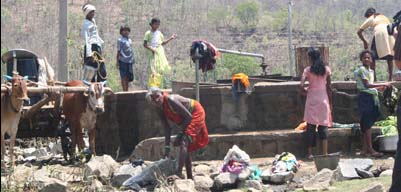India is playing an ever-important role in the world’s cotton market. Set to bypass the United States and become the world’s second largest producer of cotton in 2007, India has seen its cotton sector undergo critical changes in recent years. This handbook explores the various facets of cotton production in India — from the introduction of biotechnologies and the subsequent increase in production to the despair of small-scale cotton farmers — and analyzes the domestic and international forces at play. Cotton subsidies and agricultural policy are closely examined.
What Are Bt Cotton Seeds?
Cotton is a crop highly susceptible to damage caused by a pest called American bollworm. In 1989, American agro-engineers developed the Bt (Bacillus thuringiensis) cotton seed, a genetically modified seed designed to grow cotton that resists the bollworm.
Monsanto, one of the world’s largest producers of genetically modified or transgenic seeds, holds a patent on Bt cotton seeds. The St. Louis-based company first introduced the seeds in the United States in 1996. It has since been approved for use around the world, including Argentina, Australia, China, Egypt, India, Mexico, Paraguay, and South Africa.
Bt in India Between 1998 and 2001, Monsanto and Indian seed company, Mahyco, conducted field trials of genetically modified seeds in India. In 2002, the government of India approved the commercialization of Monsanto’s Bt cotton seeds. Indian cotton farmers have rapidly adopted Bt cotton and can now choose between 111 varieties of Bt cotton cultivars. Farmers have seen their cotton yields increase dramatically and do not need to use as much pesticide for their cotton crops. From 2005 to 2006, the area under Bt cotton cultivation increased threefold and now covers 42 percent of India’s planted cotton area. By 2006, more than half of the four million cotton farmers in India were growing Bt cotton. Bt cotton is the only commercially grown genetically modified crop in India, yet it is the fifth largest producer of all genetically modified crops in the world – ahead of China and Paraguay whose farmers plant several other genetically modified crops.
What are the Pros and Cons of Bt seeds?
Despite the quick and widespread adoption of Bt cotton around the world including in the U.S., China, and India, a fierce debate has arisen between the proponents and the opponents of genetically modified crops.
The government of India and the scientific community believe genetically modified crops will help alleviate poverty among the 700 million Indian farmers. Proponents of Bt cotton argue that the crop resists pest infestation thus lowering the need for pesticides and improving a farmer’s health prospects. Also, if grown in appropriate conditions, Bt seeds generate better yields and higher financial gains for the farmers. Scientists are working on customizing Bt seeds to specific growing environments so that farmers who do not have access to adequate irrigation, for example, can sow Bt seeds that don’t require much watering and are drought-resistant.
Those opposed to the use of Bt cotton argue that farmers can’t save seeds from one season to the other and have to take on debt to buy these expensive seeds every year. If the promised higher yields do not materialize, farmers cannot reimburse their loans and are trapped in a cycle of debt. Bt cotton also requires specialized care. It must be planted in a field surrounded by a buffer zone that prevents cross-pollination of the seeds. If this is not done properly, bollworms and other pests can develop a resistance to Bt cotton and the efficacy of the seeds eventually diminishes.
- Next: Farmer Suicides in India



